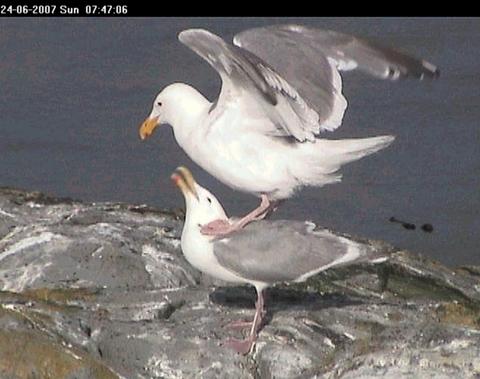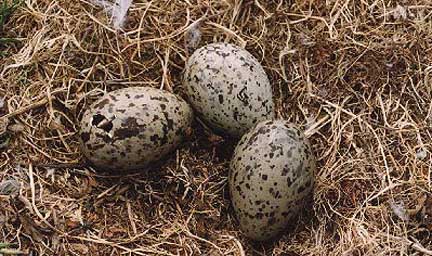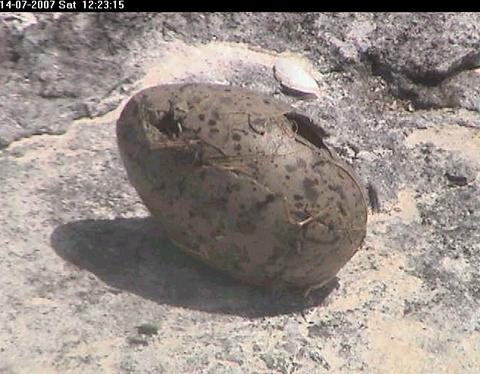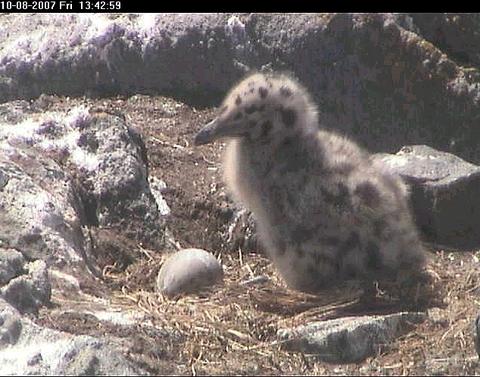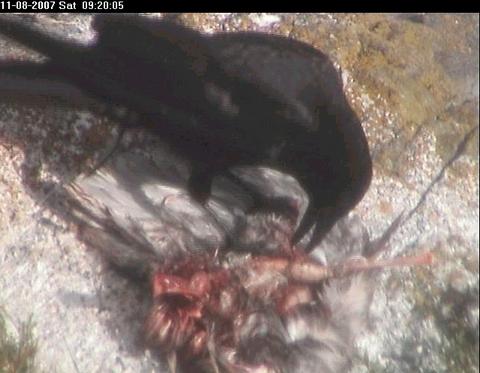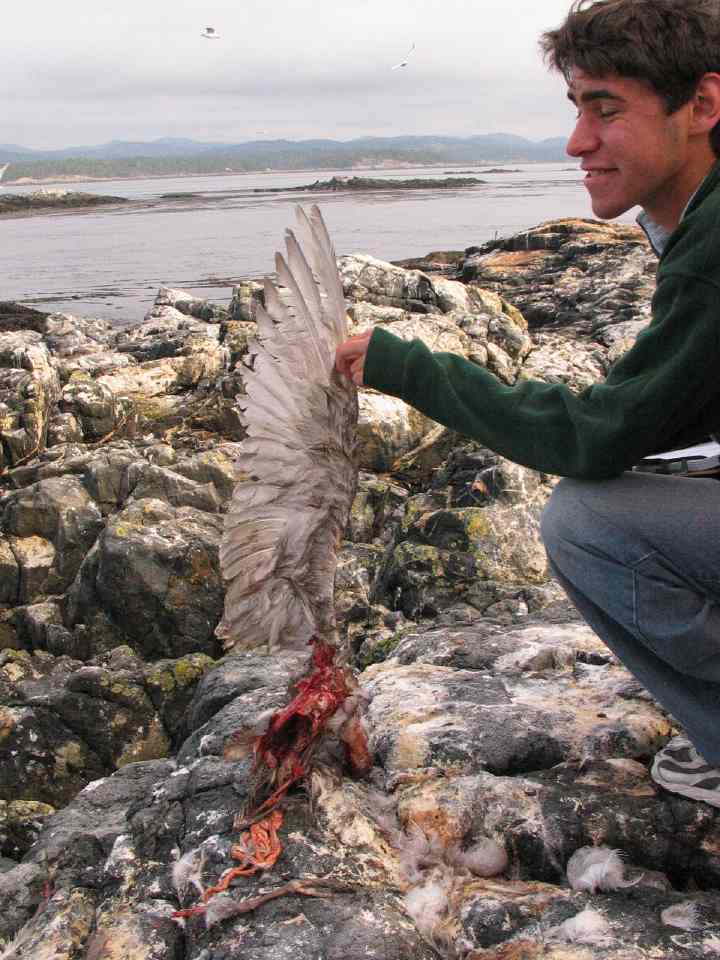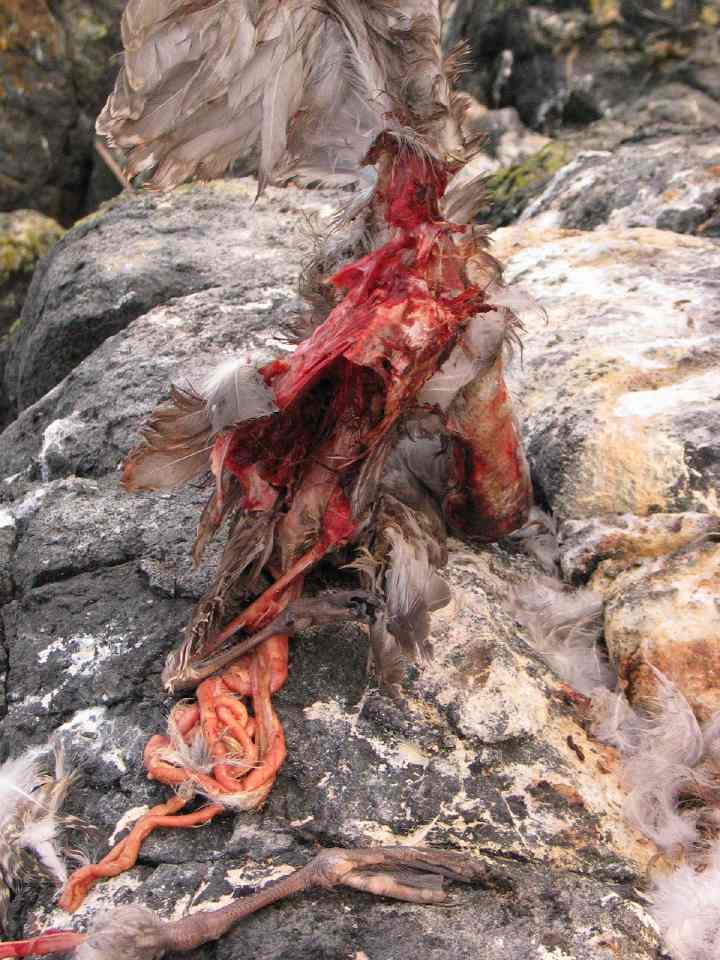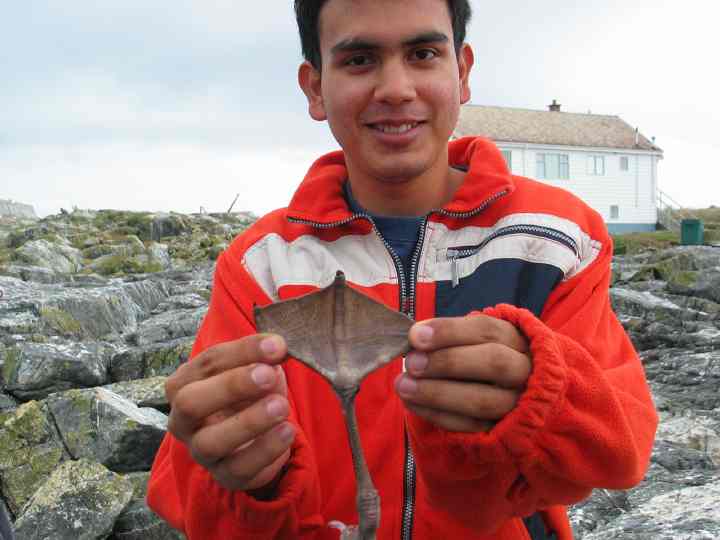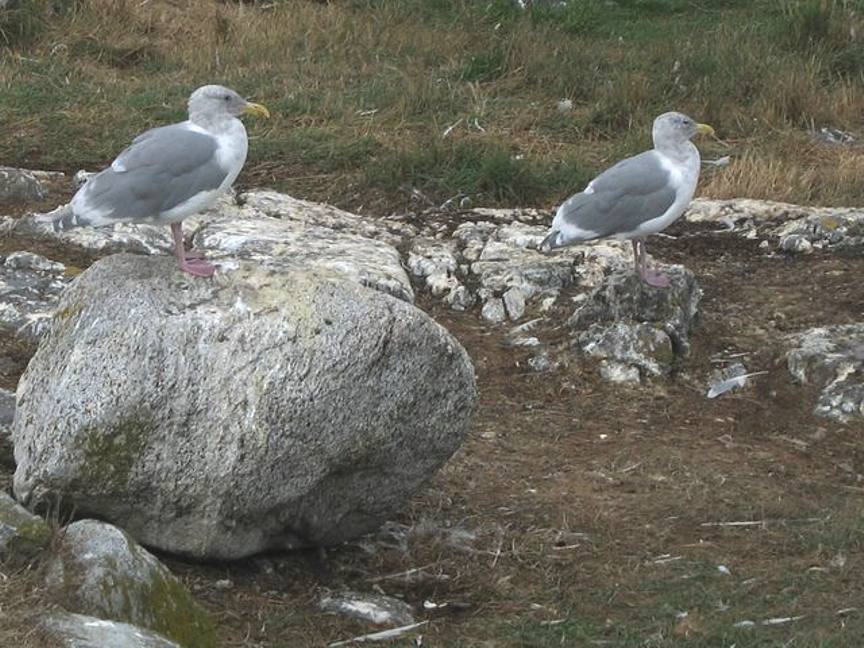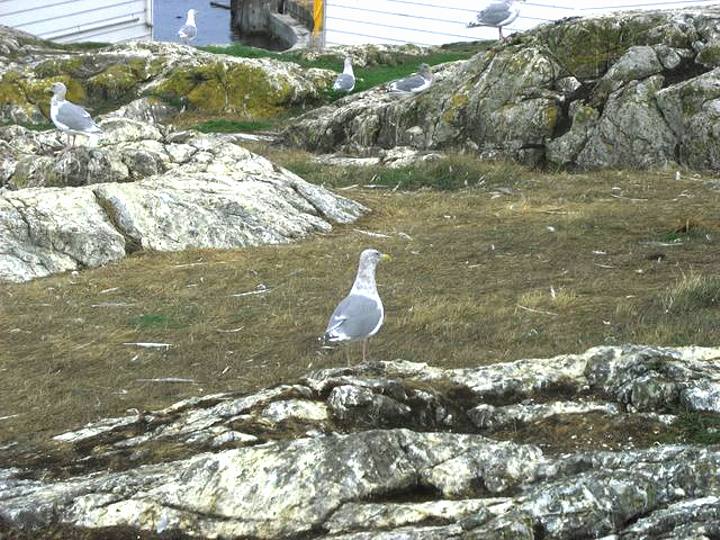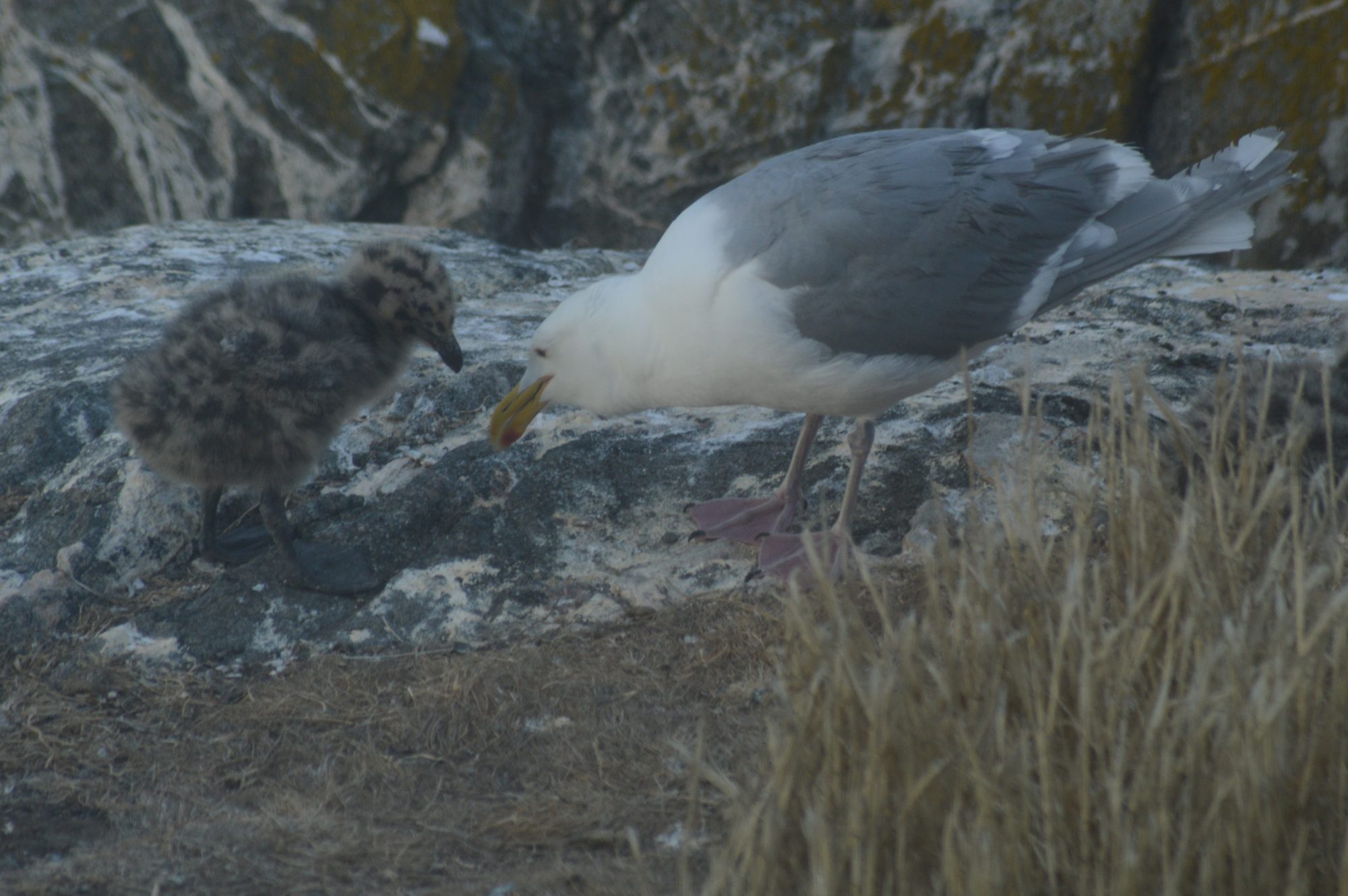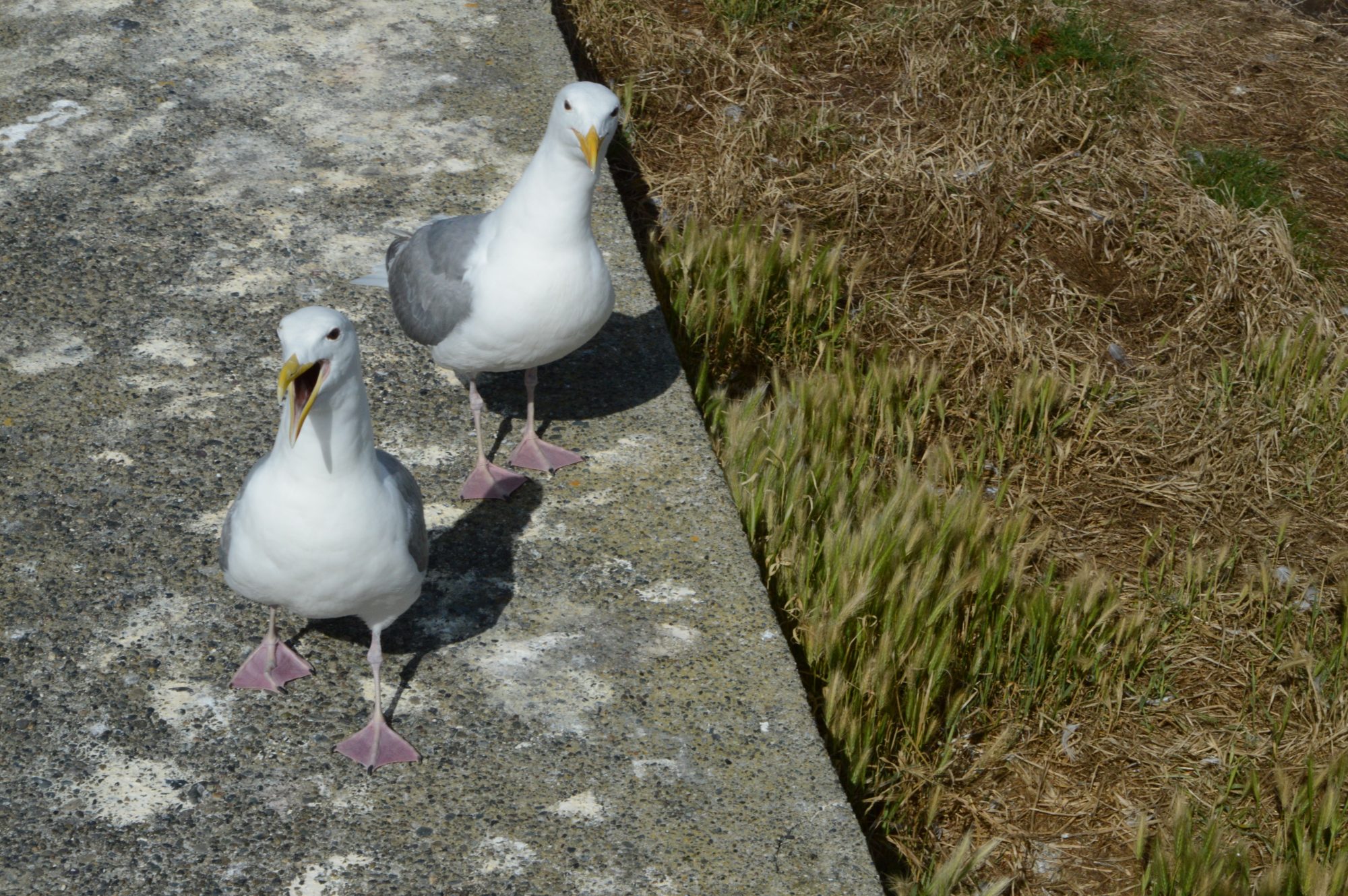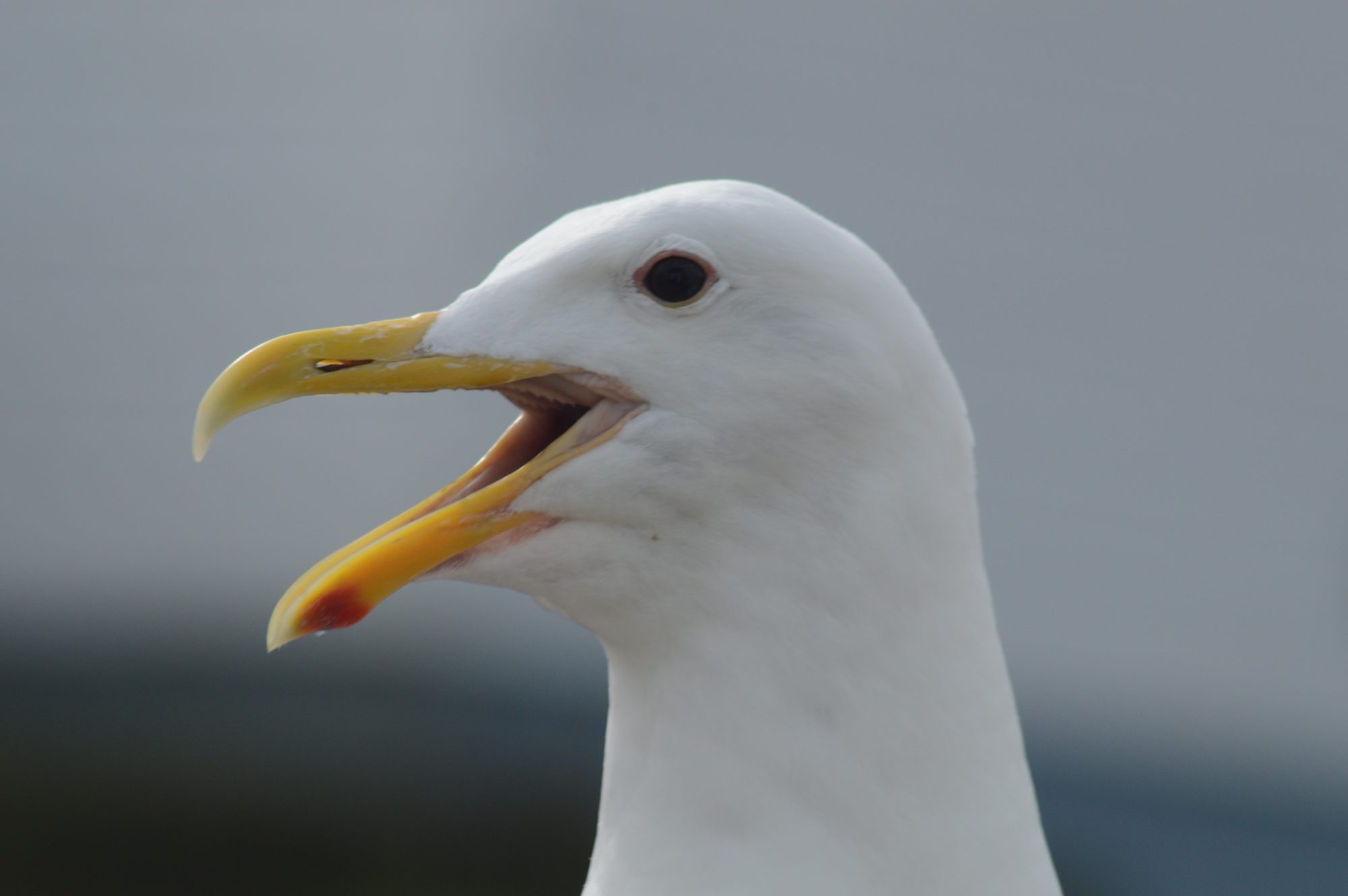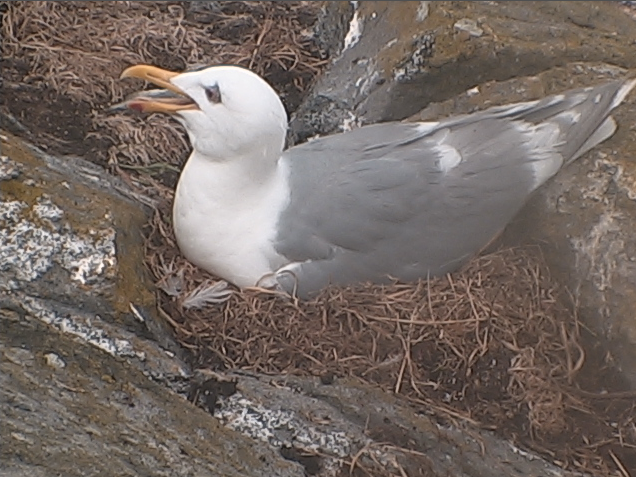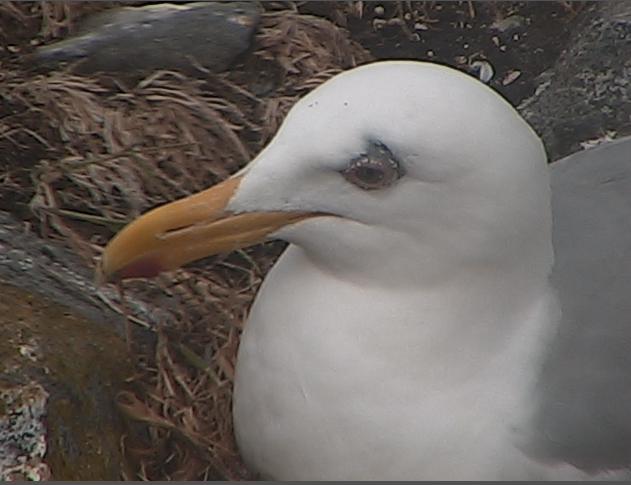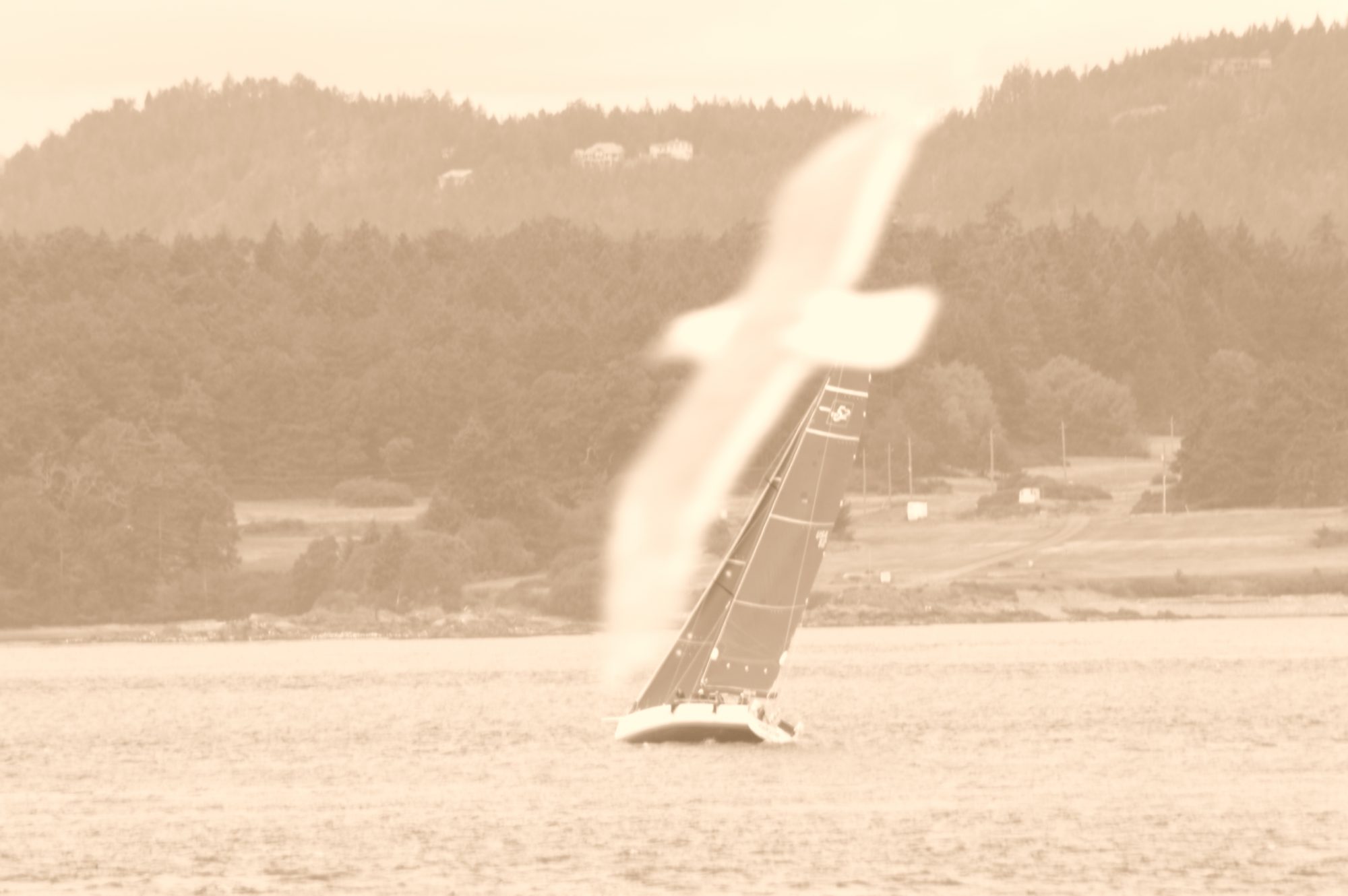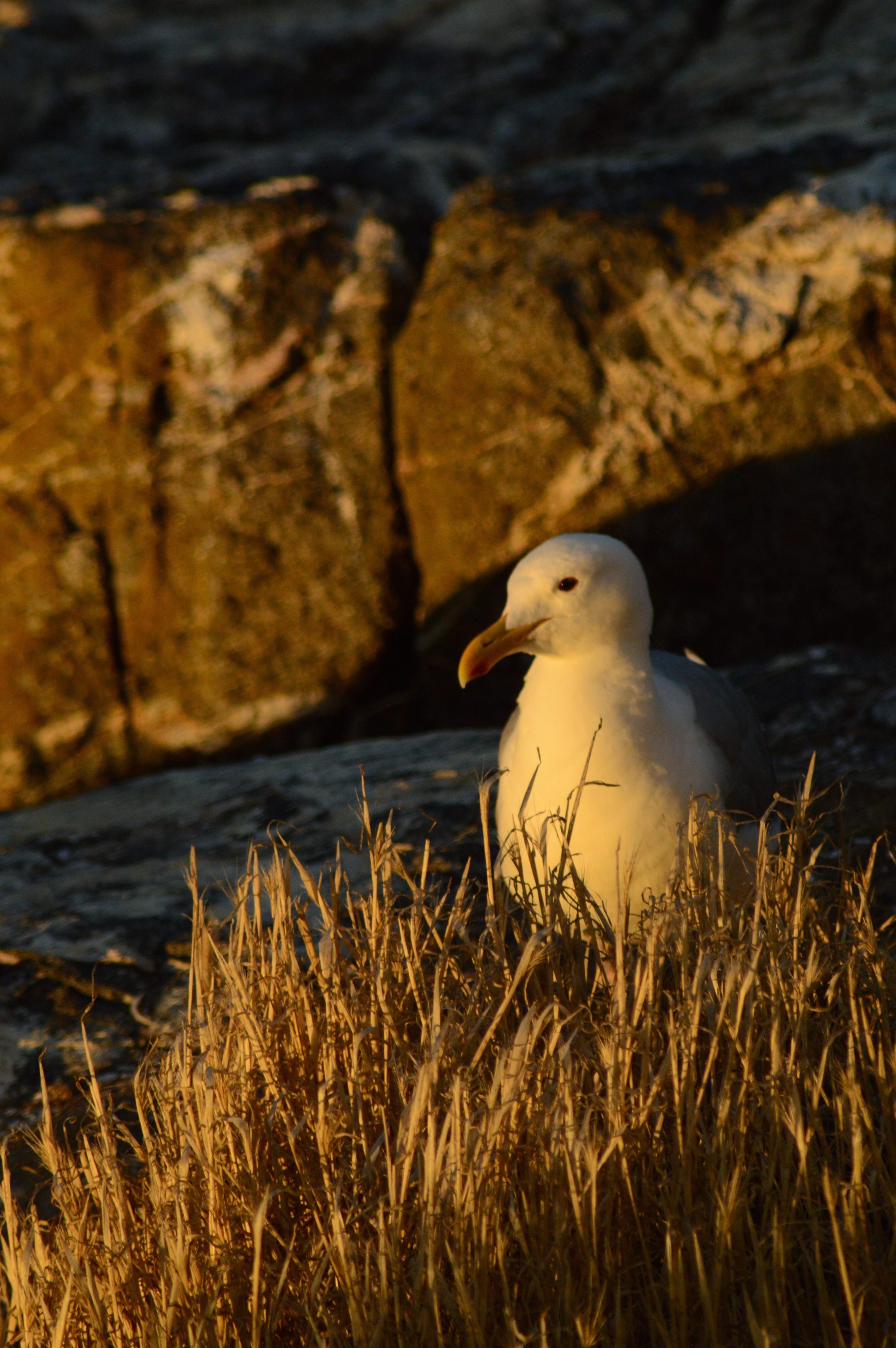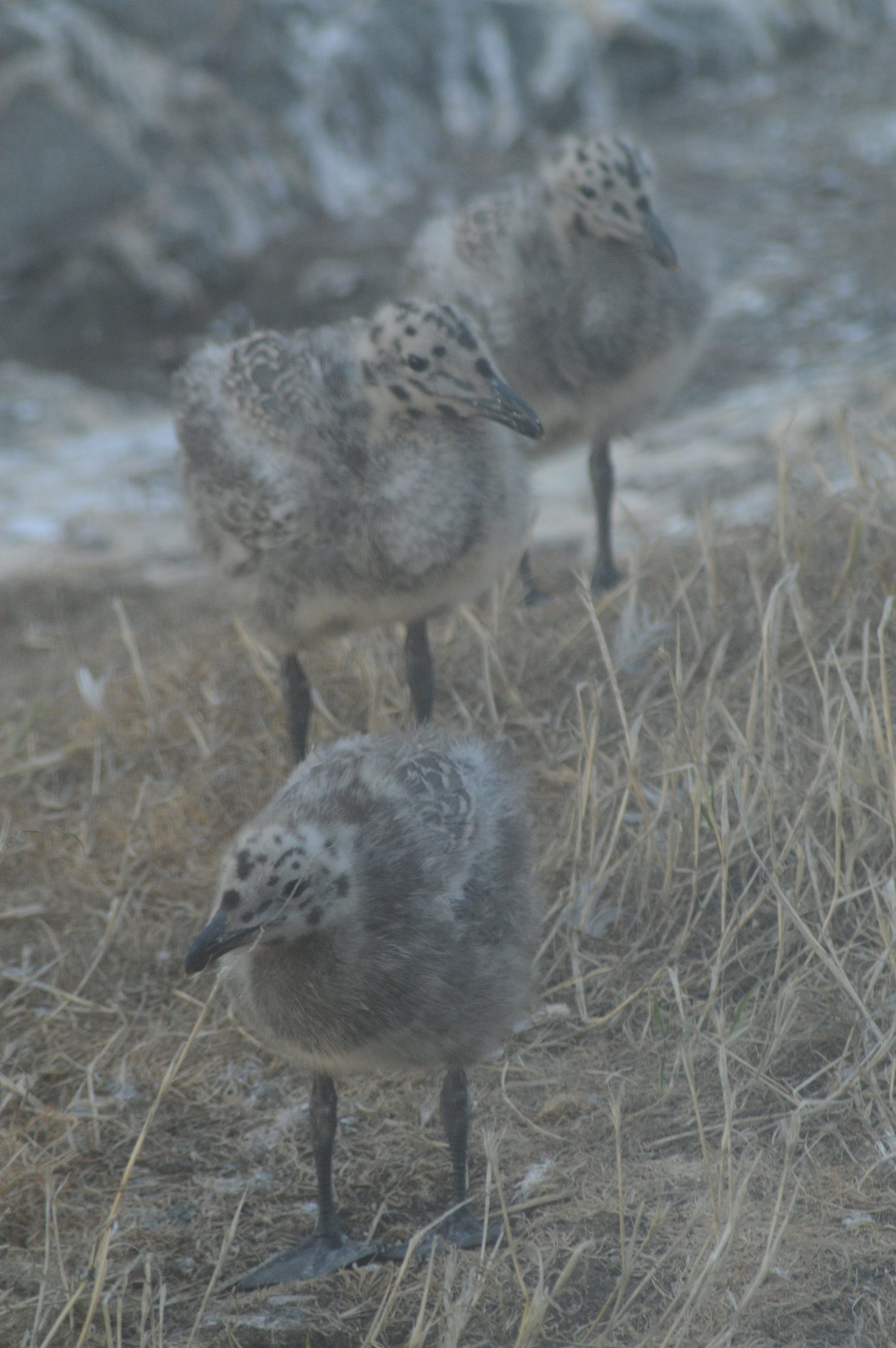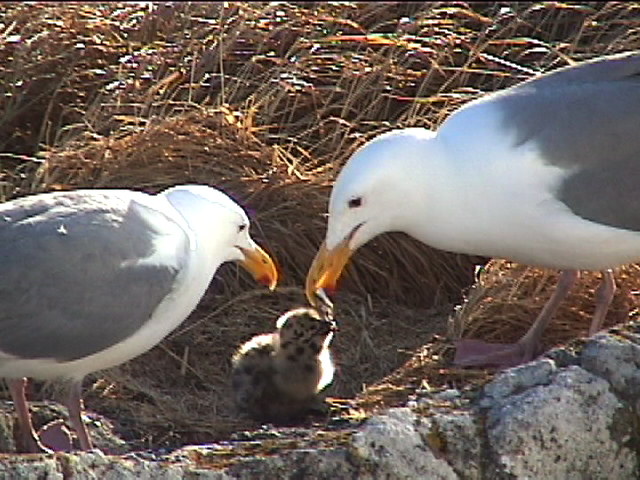 Larus glaucescens is omnivorous, feeding on carrion, fish, invertebrates, seaweed and food stolen from other birds. One of the main sources of food for Glaucous-winged gull are the softer bodied invertebrates exposed during the low tide time at Race Rocks. It is also typical of their behavior to take their hard shelled food, such as clams, or gastropods and drop them onto rocks to break them open for eating.
Larus glaucescens is omnivorous, feeding on carrion, fish, invertebrates, seaweed and food stolen from other birds. One of the main sources of food for Glaucous-winged gull are the softer bodied invertebrates exposed during the low tide time at Race Rocks. It is also typical of their behavior to take their hard shelled food, such as clams, or gastropods and drop them onto rocks to break them open for eating.
- Courtship
- Breeding
- Eggs harching
- Predation
- Chick
- waiting for food
This species is the only species of gull that nests on Great Race Rock. From June to September, there could be over 150 nests on the island. The adults also overwinter at Race Rocks, but occasionally disappear from the islands for a few weeks. They start their complicated behaviours aimed at establishing territories and bonding with mates as early as February or March. Their eggs are laid in June and hatching takes place in early July. In the 2002 season, 100 birds fledged successfully, after several years of failed nesting, probably due to fish shortages in the surrounding waters.
- Sept. 15, 2005… Almost every day now in the morning, the bald eagles make a swoop around the island .
- A fresh carcass of a juvenile is the result.
- Here Diomedes demonstrates the webbed feet of the gull
In September, the clean looking feathers of the neck and head take on a mottled gray appearance as they undergo an annual moult.
The following pictures were taken by Ecoguardian Christine Ouradou in July of 2016 and appear in logs from that time.
- Feeding time
- Glaucous winged gull chicks
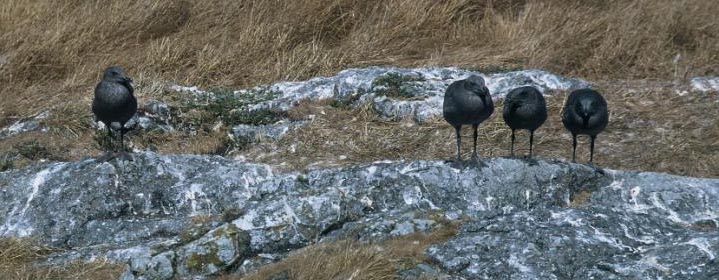 In this picture by Evan Ferrari , the young juveniles, capable of flight, still hang around for a daily feeding from their parent In this picture by Evan Ferrari , the young juveniles, capable of flight, still hang around for a daily feeding from their parent |
Domain: Eukarya
Kingdom :Animalia
Phylum: Chordata
Subphylum :Vertebrata
Class: Aves
Order: Charadriiformes
Family :Laridae
Genus: Larus
Species :glaucescens
Common Name: Glaucous-Winged Gull
The Glaucous winged Gull,
In June of 2000, David Mesiha and Satoshi Kimura (PC yr 25) made videos of different aspects of gull behavior while staying on the island. Thus started the archiving of videos for racerocks.com
June 1-16 : Aggression between males is frequent. This takes the form of plucking grass in a standoff and in beak pulling. In this way territories are defined as the nests are being built.
May 1: Breeding in the colony has started and will continue throughout May and June.
This video was taken in early July, 2001, from the north window of the Marine Science centre at Race Rocks. It shows the second day in the life of a sea gull chick. The parents feed the chick a small fish, probably herring or needlefish.
In June, 2016, Lester Pearson College set up a live camera to follow the development of one of the Glaucous-winged Gull nests with eggs in the Race Rocks Ecological Reserve . Also the camera had infrared night vision.
All entries on this website tagged with Glaucous-winged gull
Other Members of the Class Aves at Race Rocks.
and Image File |
 The Race Rocks taxonomy is a collaborative venture originally started with the Biology and Environmental Systems students of Lester Pearson College UWC. It now also has contributions added by Faculty, Staff, Volunteers and Observers on the remote control webcams. The Race Rocks taxonomy is a collaborative venture originally started with the Biology and Environmental Systems students of Lester Pearson College UWC. It now also has contributions added by Faculty, Staff, Volunteers and Observers on the remote control webcams. |
Original text by Juan Pablo Hoffmaister, PC student Dec. 2001

